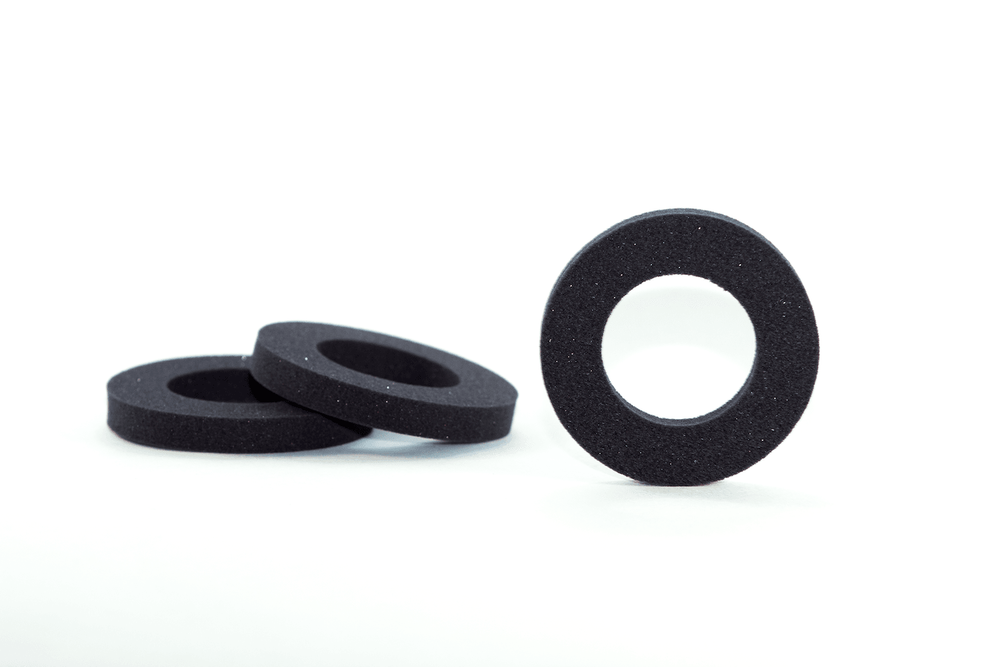
Top 5 Considerations For Custom Gasket Materials
When deciding on a custom gasket for your product, there are a number of factors that must be examined before placing an order. Any misstep in the design and consideration process, no matter how small, can result in severe problems and even system failures down the line.
To ensure a proper seal that stands up to any condition, a technical review of your chosen material is critical before making the final selection.
Below, we’ll dive into five key considerations for your custom gasket materials, and why they matter.
5 Variables to Consider Before Choosing a Gasket Material
It boils down to thinking about how the gasket will be used and the conditions it needs to stand up to.
1. Temperature
Temperature is one of the most important factors to consider when deciding on a custom gasket. There are two main areas to focus on. First, factor in both the internal and external temperatures the gasket will be experiencing. This, of course, not only includes things like the weather and any outdoor temperature extremes, but also the internal temperature and makeup of the device itself. What the gasket is keeping in or out, in other words.
Next, let your temperature findings guide you on what type of material the gasket will be made of. There are materials on the market that have a limited temperature range, or only excel on the high or low end of the temperature spectrum. Making sure you pick a gasket material that covers the entire temperature range it will be exposed to is crucial.
2. Environment
Factoring in environmental stressors does include temperature, but there are more noteworthy variables than just heat and cold. Some of the most important to be aware of are:
- Chemical resistance: Think about the fluids that the gasket will be holding in. Are they corrosive or toxic? Are there any external chemical risks? These factors can drastically impact the longevity of the gasket.
- UV: Consistent exposure to UV rays can quickly compromise a gasket.
- Moisture: Moisture from either internal or external sources can cause some gasket materials to corrode and deteriorate.
- Function: Will the gasket be static throughout its lifetime? Or will it be exposed to movement and/or vibration?
3. Compression set
Compression set refers to a gasket’s ability to return to form after being exposed to a high compressional force. This is a crucial variable because, over time, gaskets that are exposed to force and have a minimal ability to return to form (otherwise referred to as a high compression set) can result in gaps or leaks.
If your gasket will be exposed to compressional force, considering gasket materials that can easily return to form (or, those with a low compression set) is an important variable to reduce the possibility of operational failure.
4. Durometer
Simply put, the durometer reading is used to determine the hardness or softness of a given gasket. This number goes hand in hand with compression set, because the softer the material is, the higher compression set it has, and vice versa.
The durometer scale is referred to as a “shore” number, and ranges on a scale from 0-100. Softer gasket materials will register closer to “0”, while harder materials will register closer to “100”.
It is important to pick a gasket material that is soft enough to adequately create a seal between two joints, yet hard enough to be minimally affected by compressional force.
5. Industry and product standards
No matter what industry you are working in — be it automotive, aerospace, military, pharmaceutical or otherwise — there are standards and requirements for the material of your gasket. Making sure you decide on a gasket that adequately fits your project needs, while also remaining in compliance with your industry, can be a tricky process.
Let the experts at SRP guide you toward the perfect gasket solution for your business. With over 70 years of experience, we will work with you to custom fabricate a gasket that fits your needs.
